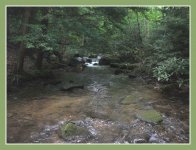pcray1231 wrote:
Generic, high floating dry flies are the way to go in the summer. Size 12-16 Humpies, Wulffs, Stimulators, etc. This is where they're at home. It's what they're made for.
The fish will be aggressive, and take nymphs or dries just as well (in the winter or in really high water you may need to go underneath, but in typical summer flows and temps, it doesn't matter).
The advantage of the dry is that thing about getting a fly to a fish before it sees you. With dries, you can do that from further away, from directly downstream, in very shallow water, float it over or around rocks and sticks, etc. That's the advantage.




